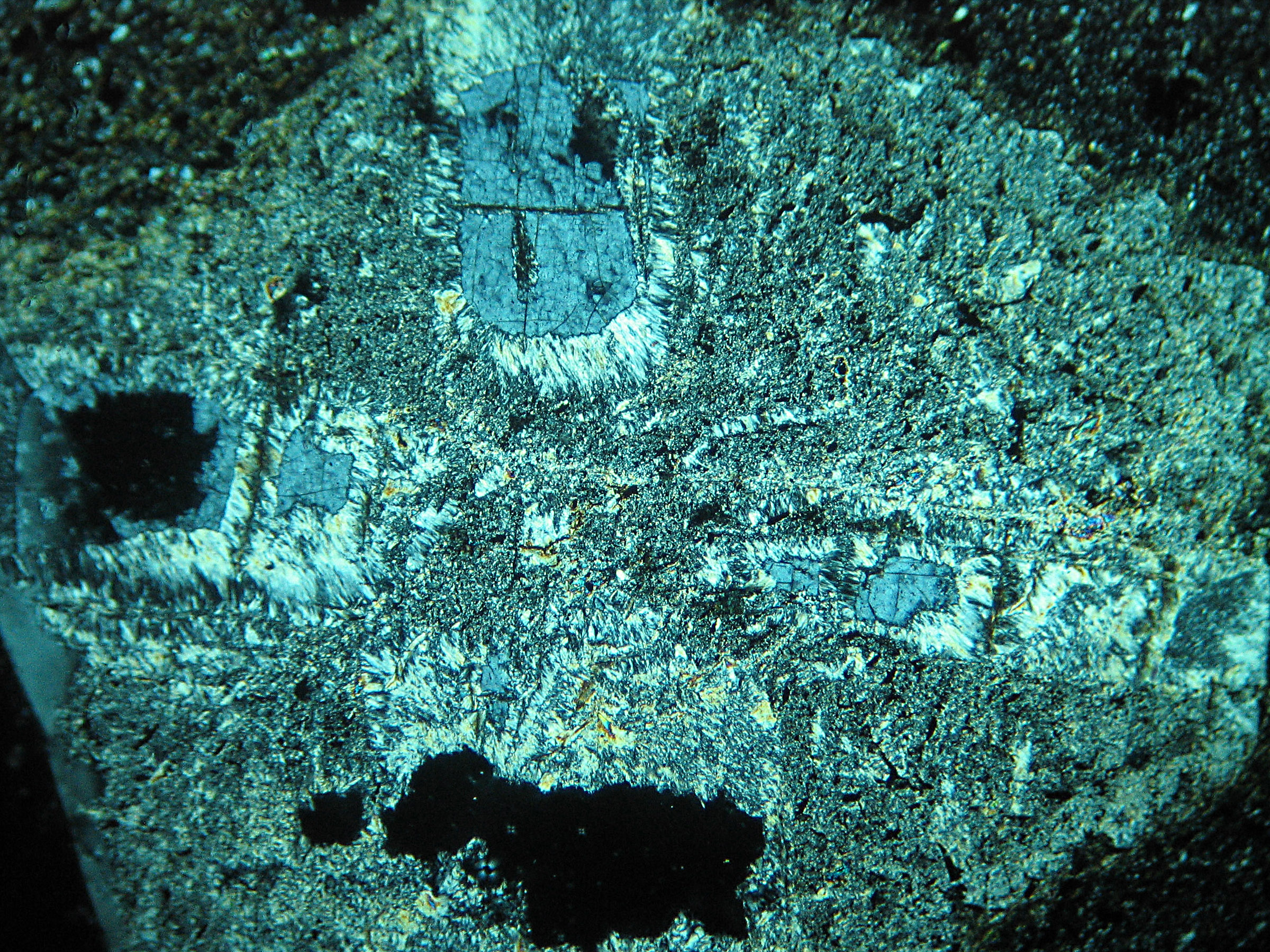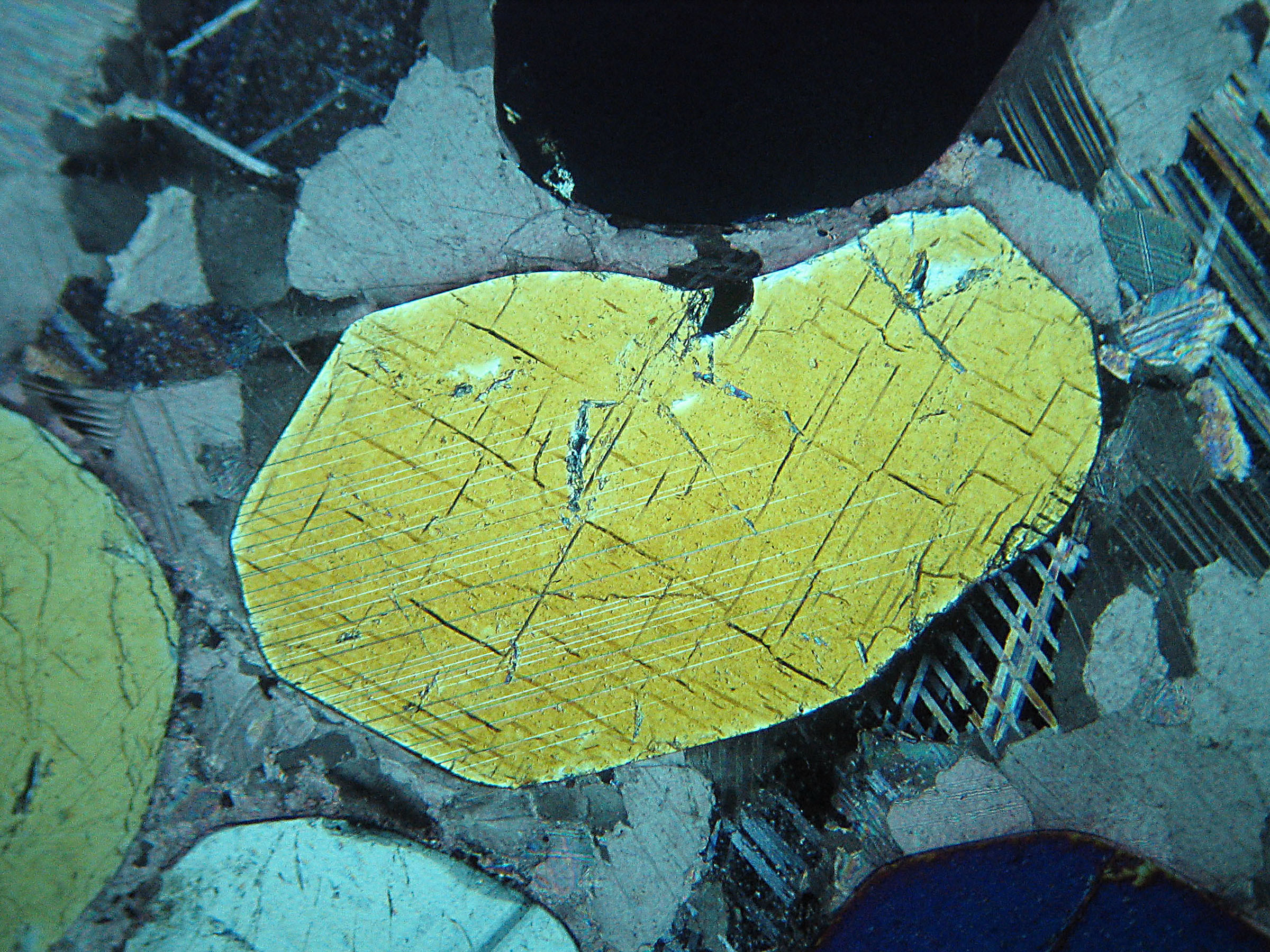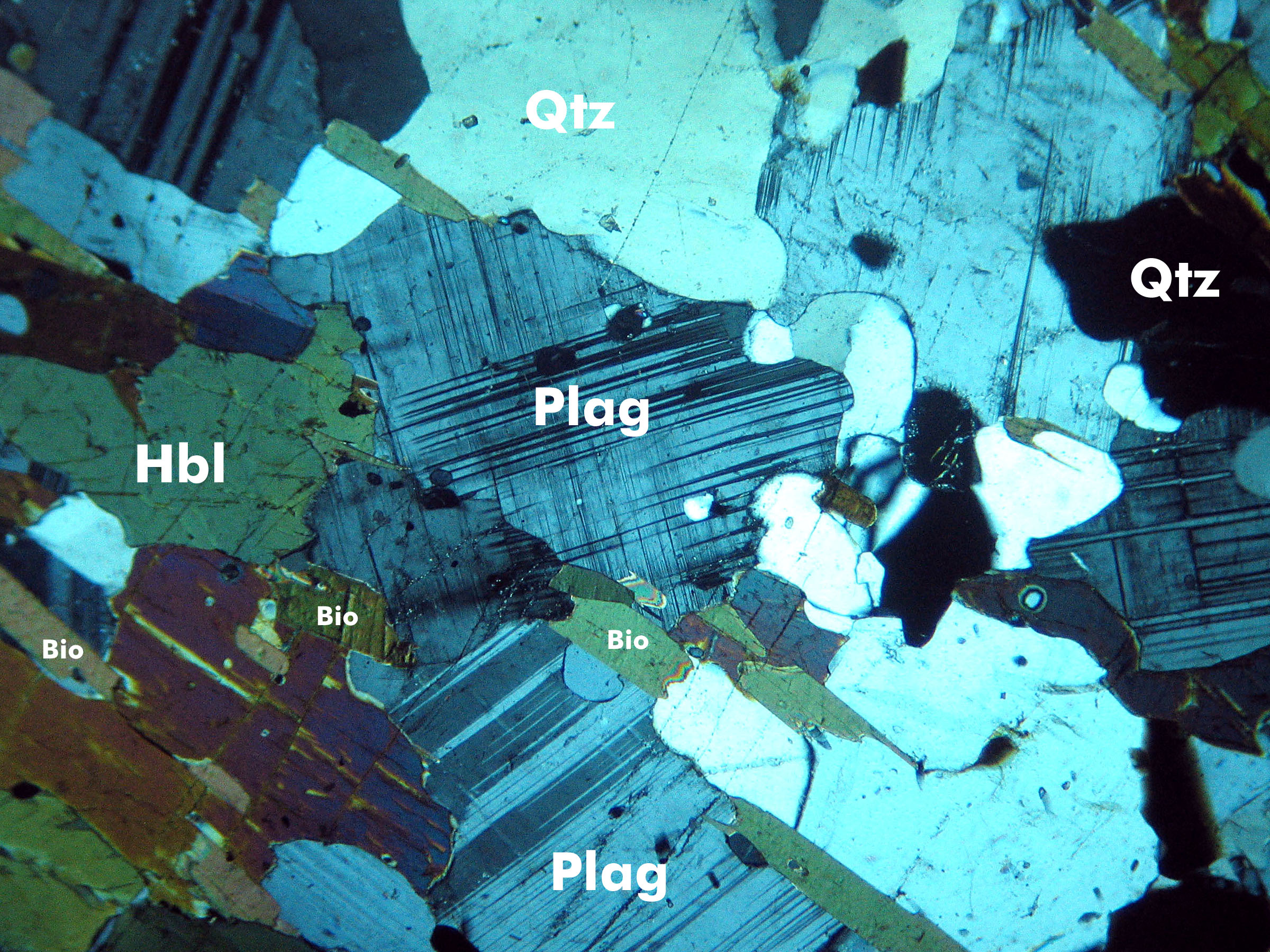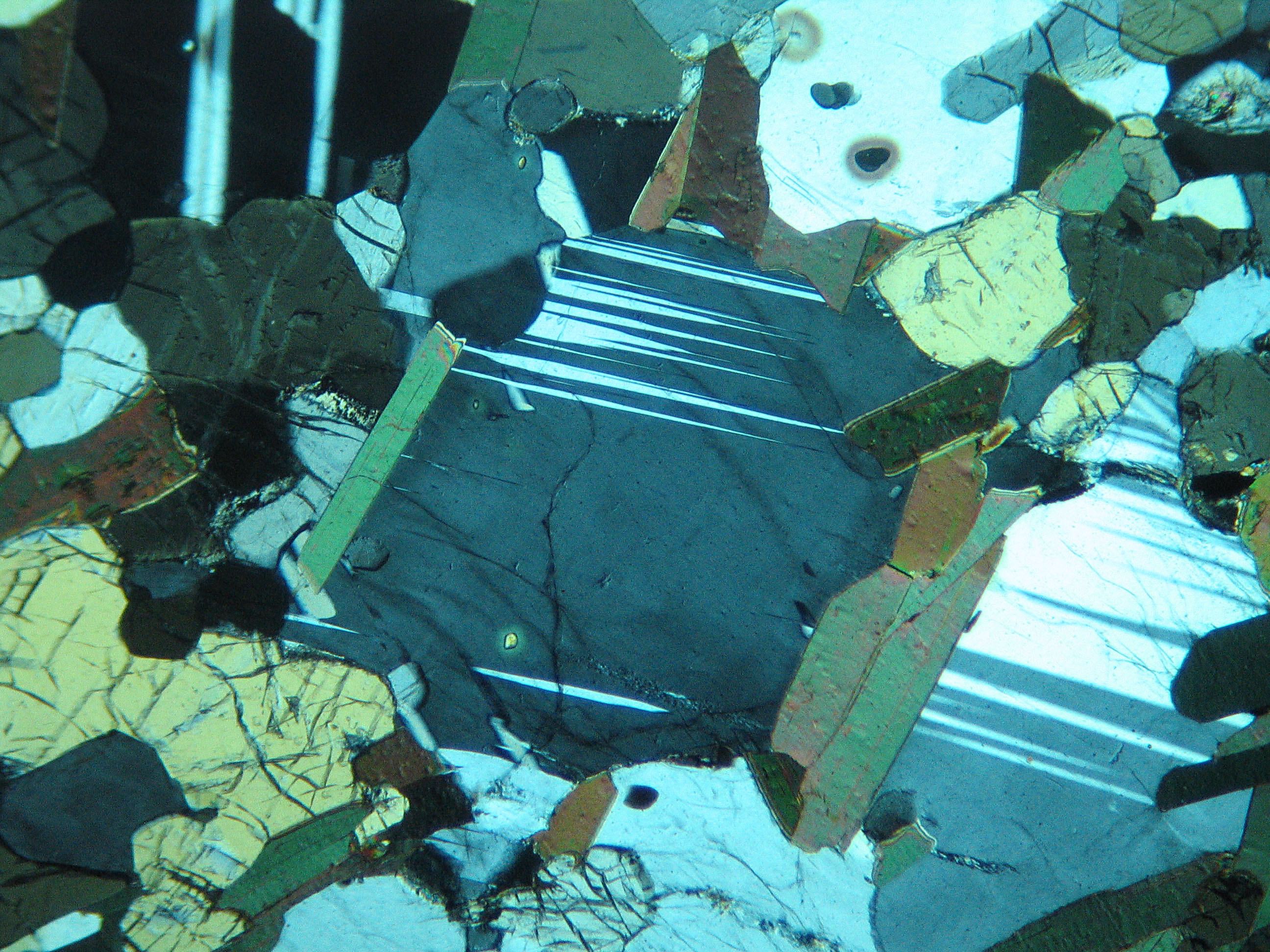Twinned Andalusite (left), Diopside (right) and Calcite (right)


Both of these are XP views. The left hand
view shows andalusite that has been
twinned to give a cross (called chaistolite).
Twins of this sort, where different crystals seem to grow into
each other, termed pentration twins, are rarely seen in
thin section. More commonly twins are seen within a single grain.
The view on the right has a large diopside
grain in the center. Faint stripes can be seen running across
the grain. These are twins -- and the stripes show because the
different domains in the grain have slightly different optical
orientations. The mineral around the diopside
is calcite. It, too, is twinned. The
twins show as pastel stripes in some places.




